
These are straightforward applications of the formulas for sums, differences, products, and quotients. I won't write them all out. Here is part (d) as an example:

Page 5 #4 (6th edition: #12)

Page 6 #6 (6th edition: #8(a))

Page 6 #10 (6th edition: #4)

Page 6 #15 (6th edition: #14)

The cancellation law follows from this by writing  .
.
Page 11 #1
For part (a):

The other parts are similar. Note that for part (d), even though  and
and  are unspecified, you know that
are unspecified, you know that  is purely real
(hence a horizontal vector) and
is purely real
(hence a horizontal vector) and  is purely imaginary
(hence a horizontal vector). In the case where
is purely imaginary
(hence a horizontal vector). In the case where  , the
picture looks as follows:
, the
picture looks as follows:
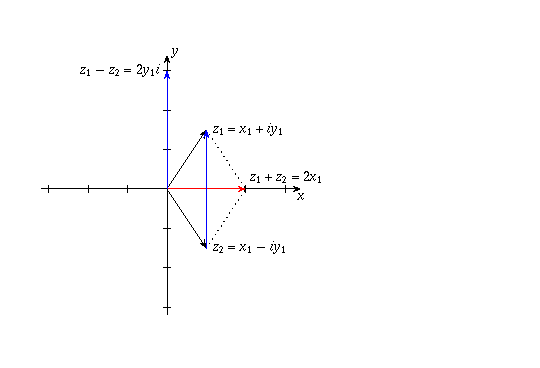
Page 11 #2
Part (a) follows because

(the first inequality is from the law
 , the second from the
law that
, the second from the
law that  (and the fact that the conjugate of 3i=0+3i is
0-3i, i.e. -3i).
(and the fact that the conjugate of 3i=0+3i is
0-3i, i.e. -3i).
Parts (b) and (c) are similar; I won't write them all out.
Part (d) follows because
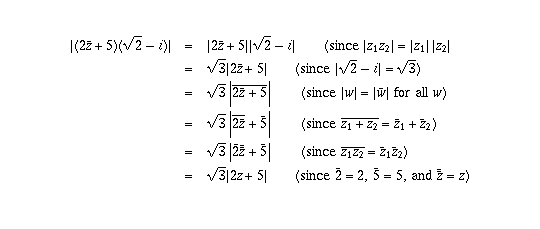
Page 11 #4
First we prove that  for all real numbers
a and b. We do this by observing that
for all real numbers
a and b. We do this by observing that
 and the desired inequality follows by
adding 2ab to each side.
and the desired inequality follows by
adding 2ab to each side.
Now,

Since both | Re z| + |Im z |
and | z | are non-negative, it is legitimate to
take the square roots of both sides to conclude that
 , as desired. (For non-negative
numbers A and B,
, as desired. (For non-negative
numbers A and B,  if and only if
if and only if  ).
).
Page 11 #6 (6th edition: #14)
For part (a), note that z is real if and only if Im z = 0, i.e.,
 , which is true if and only if
, which is true if and only if
 (i.e.,
(i.e.,  ).
).
For part (b): if z is either real or pure imaginary, then either
 or
or  , and in either case
, and in either case
 .
.
Conversely, if  , then
, then
 , so either
, so either
 or
or  , so either
, so either
 or
or  ,
so z is either real or pure imaginary.
,
so z is either real or pure imaginary.
Page 11 #10 (6th edition: #9)
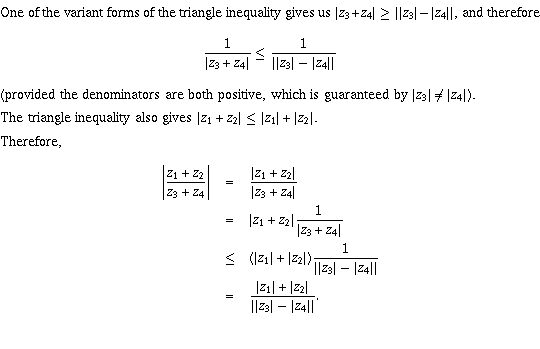
Page 11 #11 (6th edition: #10)
(a) Circle of radius 1 centred at 1-i.
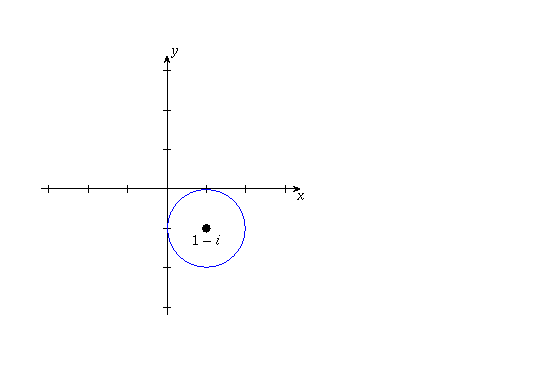
(b) Closed disk (circle together with the points inside the circle) of radius 3 centred at -i.
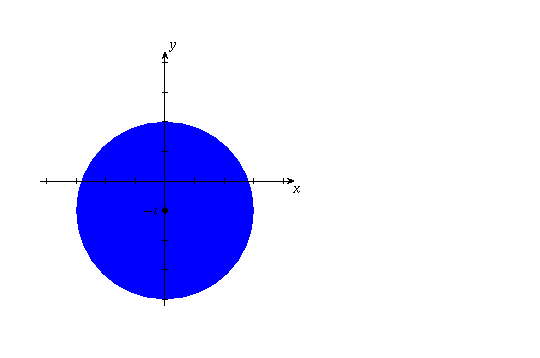
(c) If z=x+iy,  so the sketch consists of the line x=2.
so the sketch consists of the line x=2.
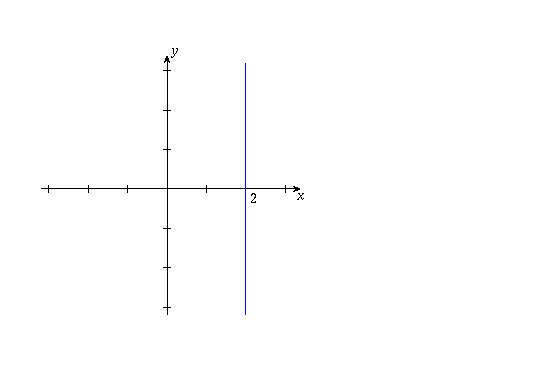
(d) Since |2z-i|=4 is equivalent to |z-(1/2)i| = 2, the sketch is a circle of radius 2 centred at 0.5i.
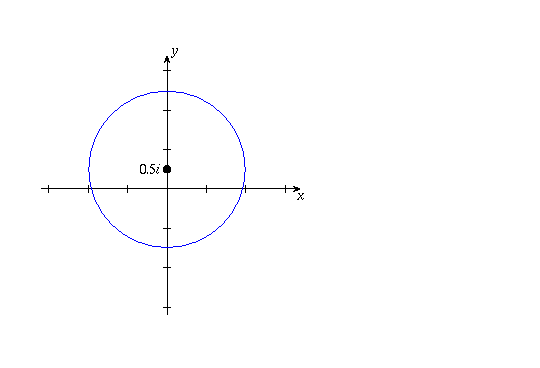
Page 11 #13 (6th edition: #12)
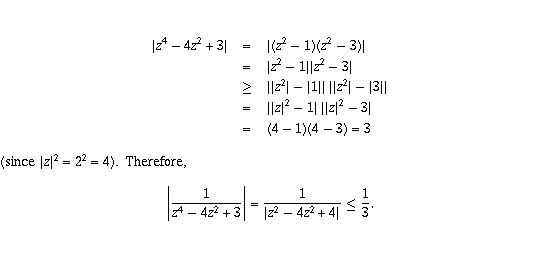
Page 12 #17
Since two non-negative numbers are equal if and only if their squares are equal, the equation can be rewritten

Page 12 #18
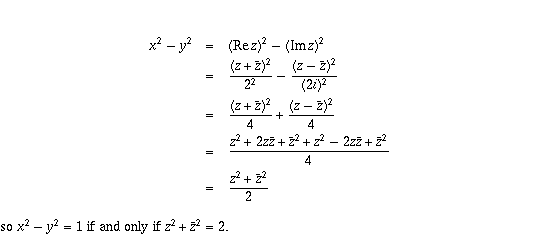
Page 12 #19
(a) This equation represents the set of points for which the sum of the distance to 4i (i.e., the point (0,4)) and the distance to -4i (i.e., the point (0,-4)) is 10. Geometrically, the set of points for which the sum of the distance to point P and the distance to point Q is a fixed value is an ellipse with foci at P and Q.
(b) This equation represents the set of points that are equidistant from 1 (i.e., the point (1,0)) and -i (i.e., the point (0,-1)). This set is the line bisecting the line segment joining these two points, which is the line through the origin with slope -1.
![]() Go backward to Assignment 1 (due Tuesday September 23rd)
Go backward to Assignment 1 (due Tuesday September 23rd)![]() Go up to Contents
Go up to Contents![]() Go forward to Assignment 2 (due Tuesday September 30th)
Go forward to Assignment 2 (due Tuesday September 30th)![]() Switch to text-only version (no graphics)
Switch to text-only version (no graphics)